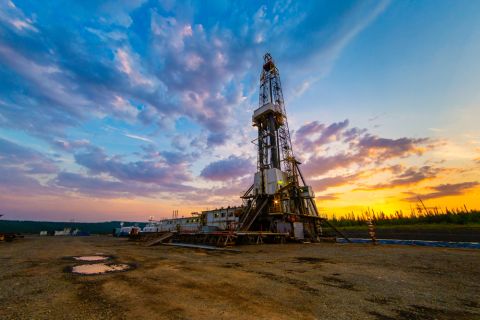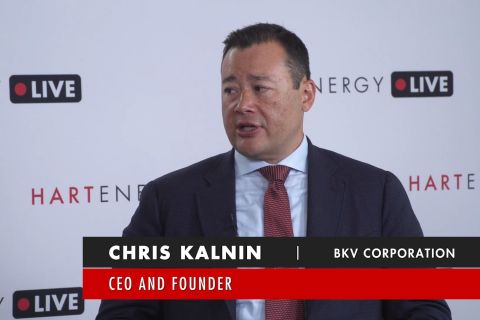The enthusiasm that Claudi Santiago brings to his job is infectious. Santiago, COO for private equity company First Reserve, is in the somewhat unique position of watching technological progress unfold and deciding which parts might need a little financial boost. The oil and gas industry is, some might say, his oyster.
Santiago came to First Reserve after a 32-year career at GE. He spent the last 14 years as president and CEO of GE Oil & Gas, a business that was started with the acquisition of a compression company and that he built to a US $15 billion company.

Claudi Santiago, COO of First Reserve. (Images courtesy of First Reserve)
After competing with private equity firms during his time at GE Oil & Gas, Santiago decided to test the waters. After meeting with several firms, he chose First Reserve, feeling it was “the most knowledgeable, the most capable, and the most reputable.” It was also a decision based on firsthand experience.
“I had the opportunity to buy businesses from First Reserve, sell businesses to First Reserve, and compete for deals with First Reserve,” he said. “I had a very good insight about the domain, knowledge, and expertise that exists within the firm.”
Wild about energy
First Reserve also seemed a good fit because of its dealings in the oil and gas industry. “To me, it is one of the most fascinating industries that exists today,” Santiago said. Much of this has to do with the technological strides the industry has made in recent years.
One obvious change has been the shale gas revolution in the US. Santiago recalled, correctly, that just a few years ago the US was concerned about future supplies of natural gas. The country’s main source, the Gulf of Mexico, was headed into serious decline, and onshore fields were also less than prolific.
“Five years ago in the US, everybody was busy trying to build LNG import terminals to bring liquefied natural gas from countries like Qatar or Trinidad,” Santiago said. “In five years, the industry has turned upside down.”
He attributes this flip-flop to technology and innovation, which have had such a profound impact that terminals that were once considered for importing gas are instead being considered as potential export terminals.
Deep water is another frontier that has been unlocked by innovation, he said. “Five years ago, it was unthinkable that we would be able to monetize and exploit oil from deep water,” he said. The industry was in a clutch – at a time when the economies of China and India were booming, the industry was facing the depletion of existing reserves.
“Again, thanks to the innovation and the technology appetite of the industry, we are now capable of producing oil that five years ago was unthinkable,” Santiago said.
With the global economy in slow recovery after the 2008 recession and developing nations continuing to demand more hydrocarbons, Santiago said it is “paramount” to continue to invest in technology innovation. “These subsea reservoirs that have been brought onstream over the last few years will allow us to satisfy this incremental demand and compensate for the depletion of our existing reserves,” he said. “If we hadn’t invested significant amounts of money on technology and innovation, we would have hit the wall.”
Investing in the future
Santiago said that First Reserve is in the business of anticipating these types of market trends. “Our role as a private equity firm is to spot, ahead of anyone else, trends that will create opportunity for us and our investors that will allow us to make smart investments,” he said.
During the firm’s 29-year history, First Reserve has invested in 30 E&P companies.
About 70% of the current E&P portfolio companies are domiciled in the US, and the majority is in the two “mega-trends” he outlined – shale gas and deep water. “Those are the two megatrends that are driving the industry and that we are convinced will grow for many, many years to come,” he said.
Shale gas has revolutionized the way the industry thinks about its energy supply. First Reserve has made an investment in an E&P company focused on shale development in Romania. He said that country has been dependent on expensive Russian gas for years, so investing in a company in Romania that will develop its vast shale gas reserves “was a good thing to do.”
The company’s offshore focus is primarily on two markets: Brazil and West Africa. In Brazil, First Reserve has invested in a company called Barra Energia in a joint venture with Petrobras. “We have done some exploration work that has been very successful so far with very encouraging results,” Santiago said. “This is located 232 km [141 miles] from the coast of S?o Paulo State and is occurring at a depth of 6,213 m [20,383 ft], so it’s very high-tech.
“But once again, these are investments that we like because these are the kinds of reserves that the world is going to need to compensate for the depletion of the more traditional reservoirs, in particular those in the Middle East,” he said. West Africa shares analogous geology to Brazil, and First Reserve also has made a major investment in Cobalt International Energy, which has assets offshore Angola and Gabon.
In addition to investing in E&P companies, First Reserve also invests in other energy-related companies focused on midstream and downstream, equipment and services, and infrastructure. “With our global footprint and our knowledge about the industry, we try to accelerate the growth of these companies, opening doors for them in new geographies and trying to figure out synergies with other portfolio companies that can help them,” he said. “It’s all about technology and innovation. Generally, an asset has to have a lot of these ingredients and be a company that is scalable, that has good technology DNA, and that has the opportunity to grow as part of a larger platform.
“We are looking for these volume-growth kinds of assets that will benefit from our acceleration.”
The next wave of tech transfer
The oil and gas industry has been highly successful at developing, mostly from within, the technologies needed to drive these megatrends. But it has the opportunity to learn from other industries as well, Santiago said.
“I am convinced that the next wave of innovation in the oil and gas industry will come from what I call the ‘sister industries,’” he said.
“If we can put a black box in a plane that is flying to register everything that is happening to the engines, we can put a similar black box on a christmas tree that is working 2,000 m [6,500 ft] below the seabed. The oil and gas industry is discovering that not everything needs to be invented here.”
Recommended Reading
Liberty Energy CEO: NatGas is Here to Stay as Energy Transition Lags
2024-03-27 - The energy transition hasn’t really begun given record levels of global demand for oil, natural gas and coal, Liberty Energy Chairman and CEO Chris Wright said during the DUG GAS+ Conference and Expo.
Tinker Associates CEO on Why US Won’t Lead on Oil, Gas
2024-02-13 - The U.S. will not lead crude oil and natural gas production as the shale curve flattens, Tinker Energy Associates CEO Scott Tinker told Hart Energy on the sidelines of NAPE in Houston.
API Gulf Coast Head Touts Global Emissions Benefits of US LNG
2024-04-01 - The U.S. and Louisiana have the ability to change global emissions through the export of LNG, although new applications have been frozen by the Biden administration.
Babcock & Wilcox to Convert Coal Plant to NatGas
2024-03-18 - B&W will convert the plant’s two coal-fired boilers to natural gas by designing and installing burners, air systems, fans and other equipment.
BKV CEO: Texas Grid Needs More Combined Cycle NatGas Plants
2024-04-12 - BKV CEO Chris Kalnin dives into the "core issue" of Texas' renewable grid and how the company is increasing production as the the largest producer in the Barnett Shale, in this Hart Energy Exclusive interview.





